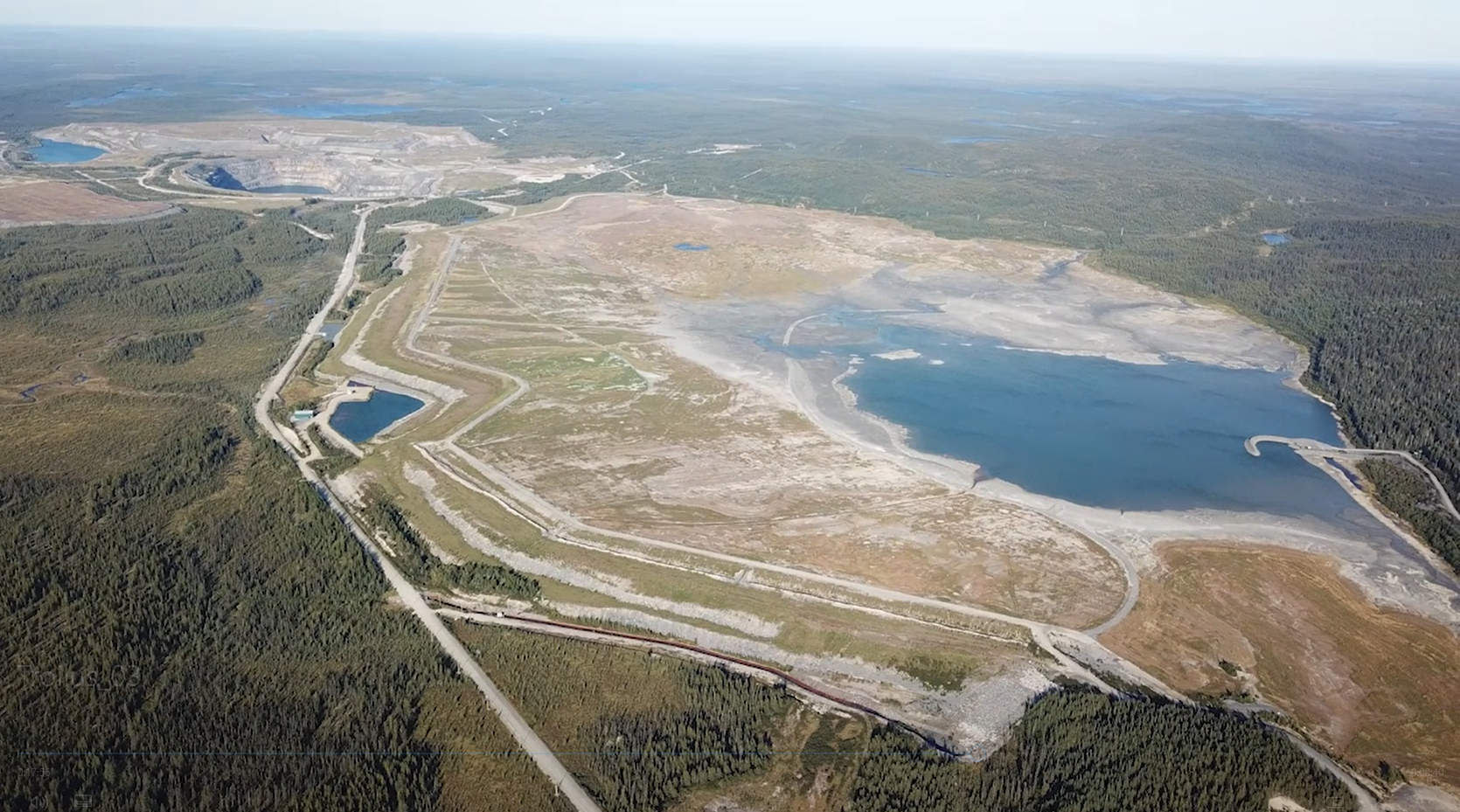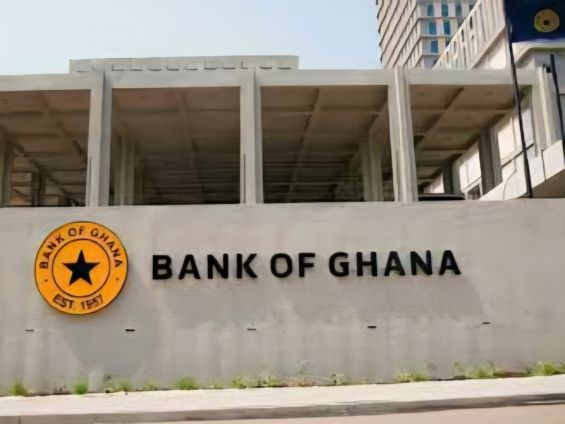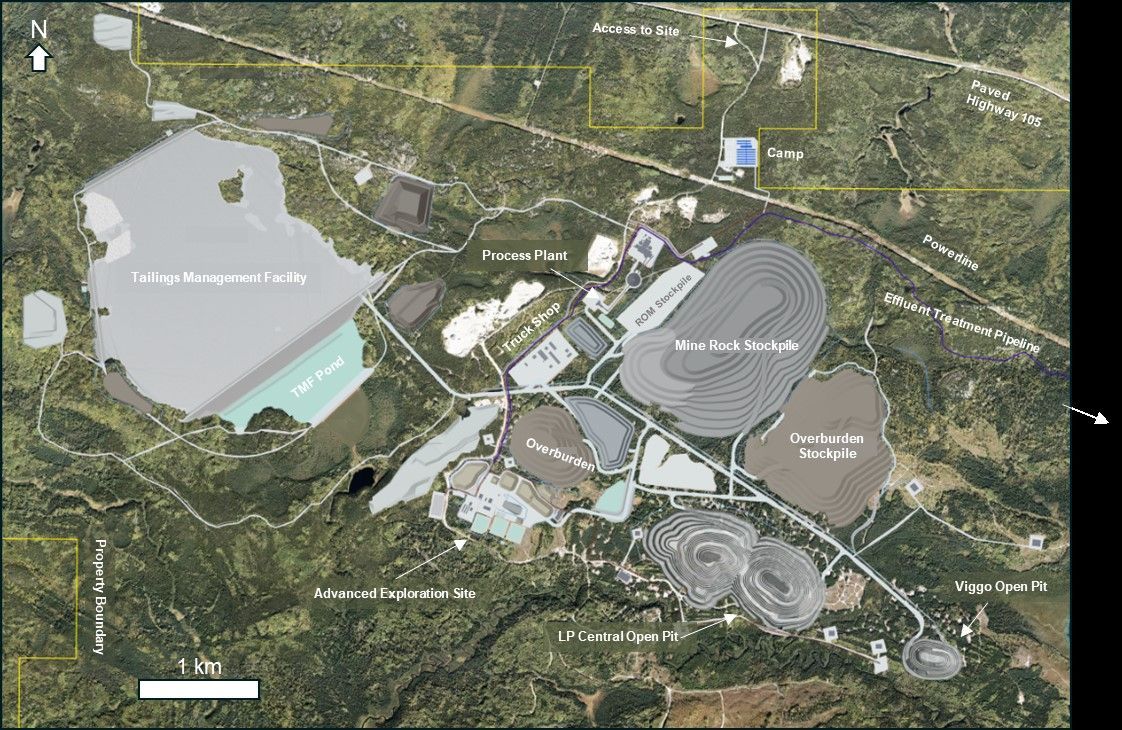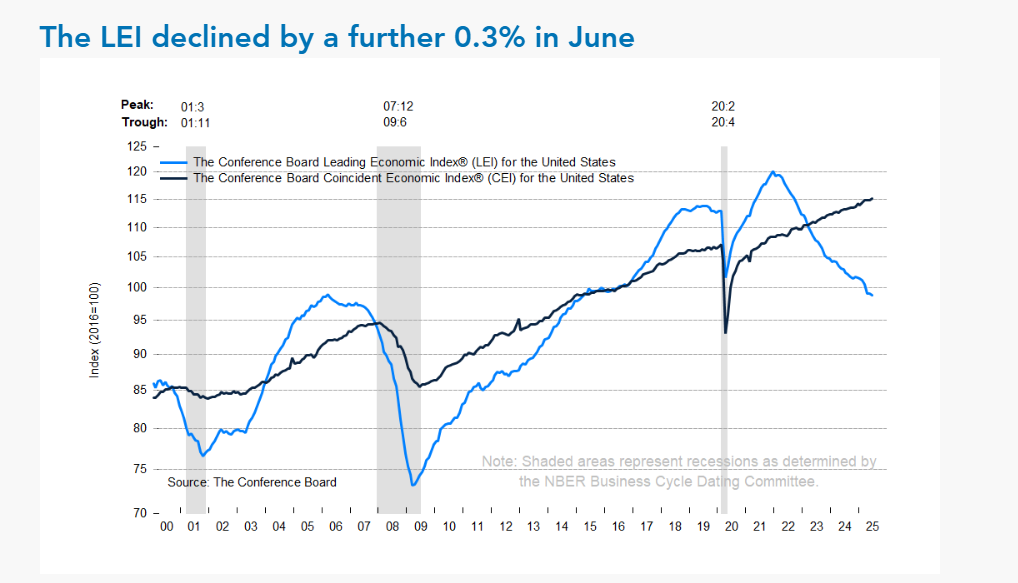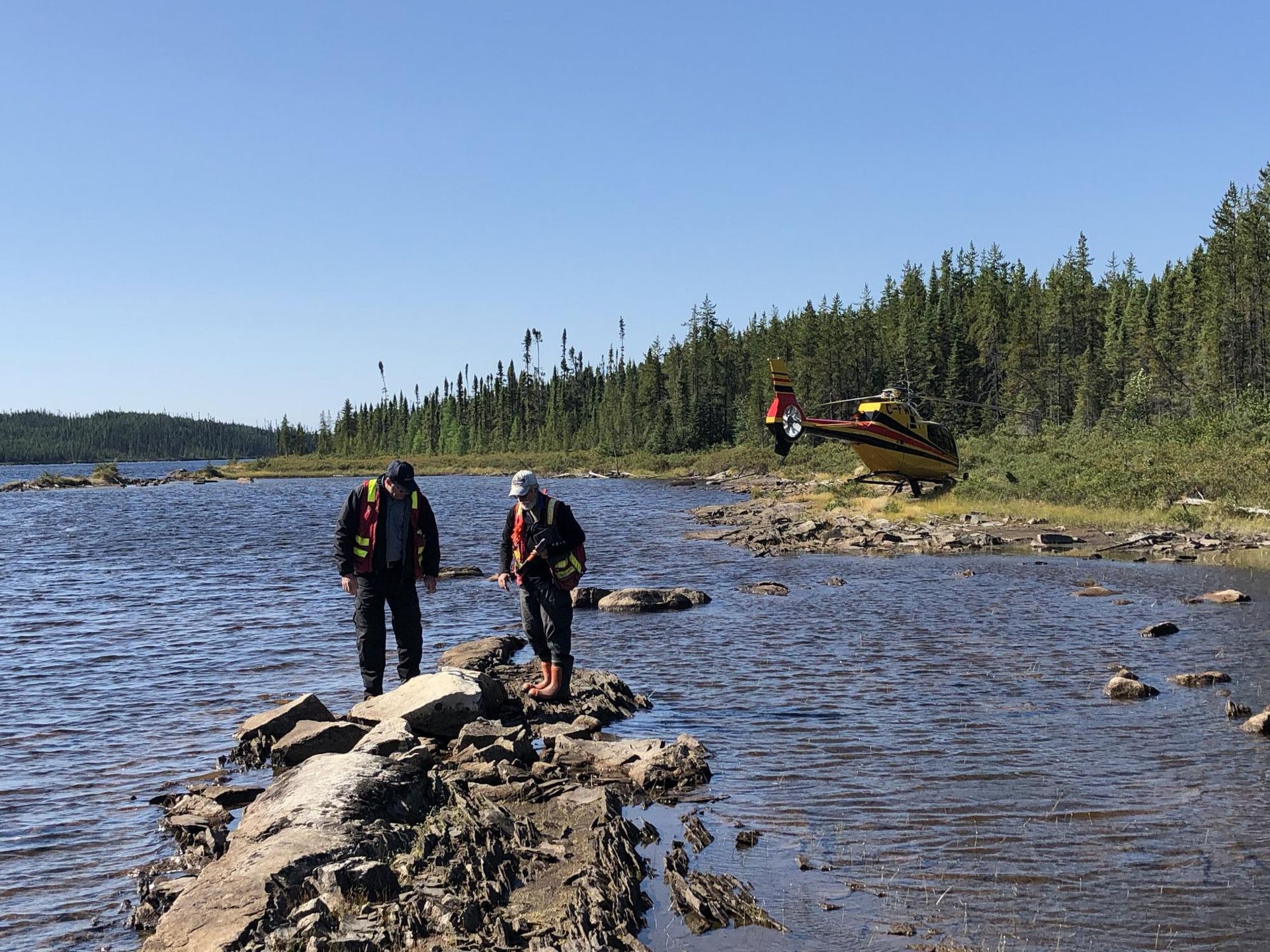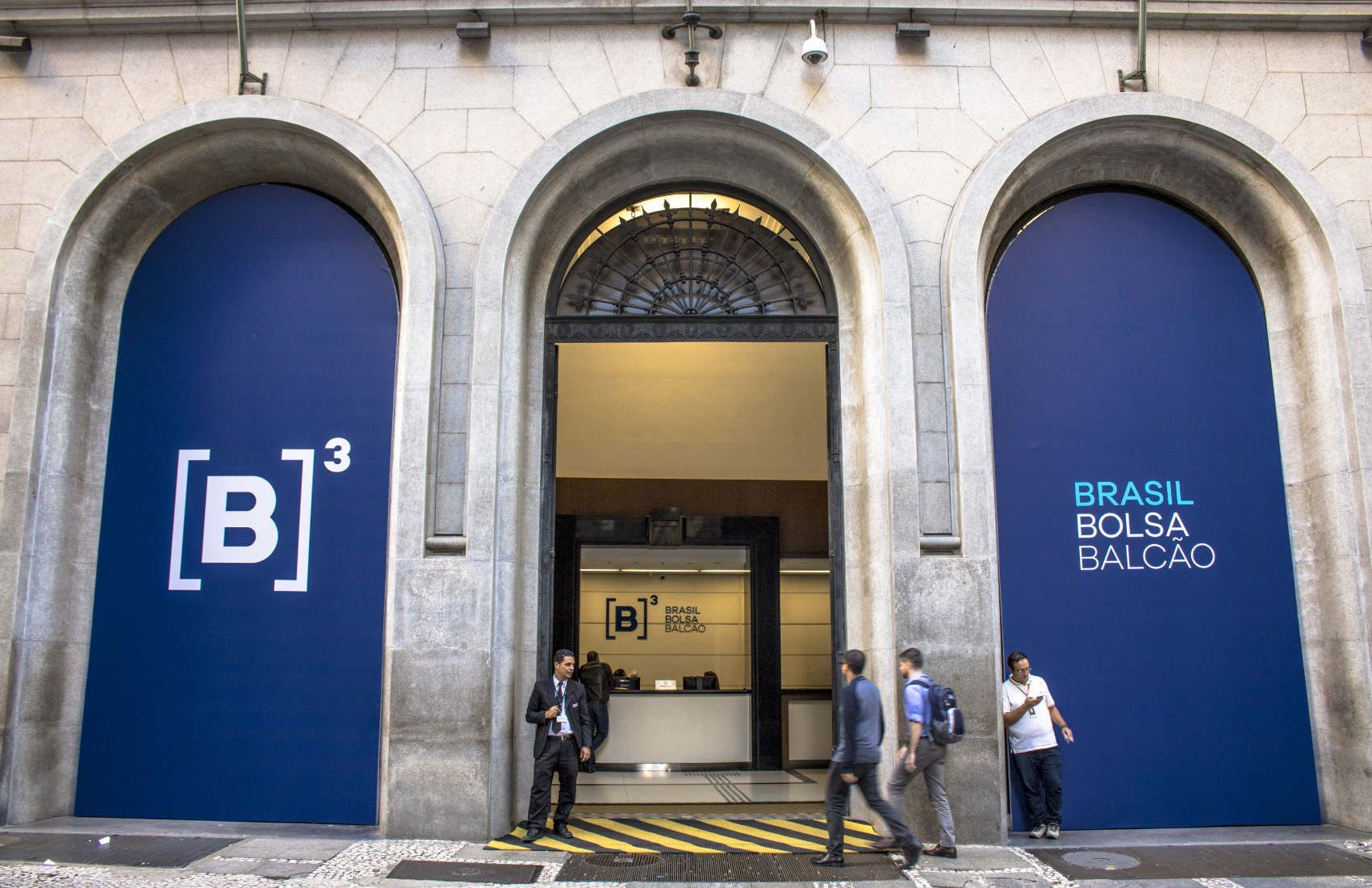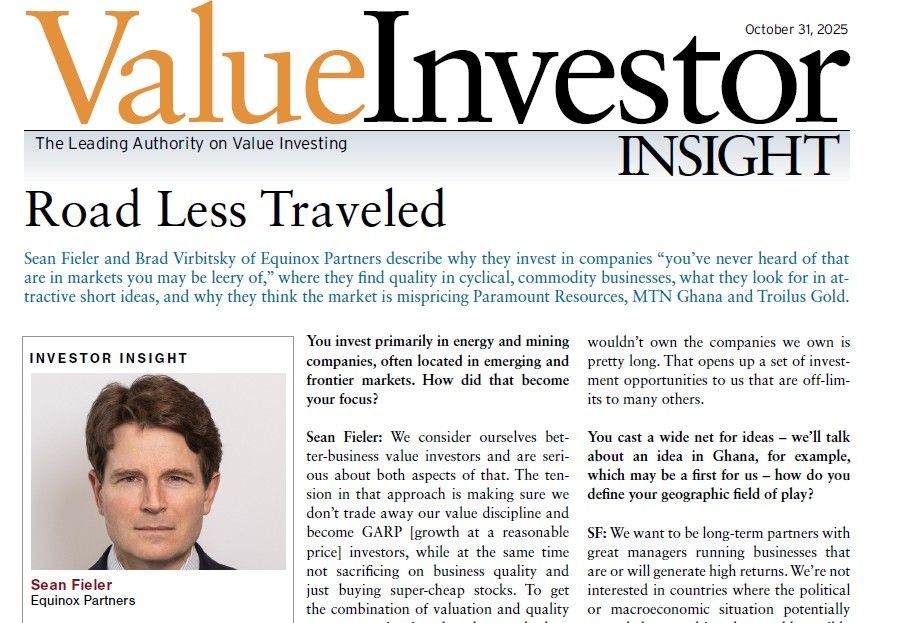Kuroto Fund, L.P. - Q2 2025 Letter
Dear Partners and Friends,
PERFORMANCE
Kuroto Fund, L.P. appreciated +21.3% in the second quarter and is up +30.1% for the first half of 2025. By comparison, the broad MSCI Emerging Markets Index rose +12% in the second quarter and is up +15.3% for the first half of 2025. Key performance drivers for the fund have been our large position in MTN Ghana, as well as the strong returns from our holdings in Nigeria and the Republic of Georgia.
A breakdown of Kuroto Fund exposures can be found here.
Despite Kuroto Fund’s outperformance in the first half of the year, our portfolio remains very attractively valued. Given the diversity of business models we own, it is difficult to find metrics that provide an accurate picture of the value and quality of our portfolio in the aggregate. In the absence of an alternative, our portfolio’s weighted average price-to-earnings multiple of 7.3x 2025 earnings, dividend yield of 5.2% and ROE of 24.7% will have to do.
Looking “under the hood” at five large holdings, which together account for approximately 65% of Kuroto:
- MTN Ghana is trading at 5.3x 2025 earnings and 3.9x our forecast for 2026 earnings.
- Georgia Capital is trading at 63% of our sum of the parts valuation and continues to grow top- and bottom-line double digits, while aggressively buying back stock at accretive discounts.
- Guaranty Trust in Nigeria is trading at book value and 3.8x 2025 earnings.
- Our two largest oil producer positions should achieve 30% free cash flow yields during 2026 assuming a $65 average oil price.
While our portfolio obviously remains attractively valued, we also want to emphasize the quality of our portfolio companies and the superior economics they enjoy. In this quarter’s letter, we detail the exceptional quality of our oil & gas companies.
Exceptional Oil & GAS Businesses
In our first quarterly letter in April 1999, we explained the term Kuroto: “We have chosen the Japanese word ‘Kuroto’, translated as ‘connoisseur’ or ‘expert’, as our namesake, in order to focus attention on our investment goal: To own only truly exceptional businesses in Asia with superior managements. This self-imposed limitation places us in good company and leverages our combined years of experience identifying excellent businesses in the West.”
While our initial charge was to take advantage of bargain prices following the Asian Financial Crisis, our goal was never just to get exposure to those markets. From the outset, we made clear our intention to own truly exceptional businesses with superior management and aligned boards. Over the subsequent decades and our expansion to emerging markets outside of Asia, we have kept this focus. Regardless of sector or country, we aim to own businesses that are competitively advantaged relative to peers, evidenced through their ability to generate superior returns on capital.
Normalizing for country-specific risk factors, we would consider an average business to be one that generates around 10% return on capital. We aim to own businesses that can generate 20%+ returns on capital. Our reason for this preference is simple, over the long-term, stock price returns tend to correlate with returns on capital.
Given our commitment to owning exceptional businesses, it’s reasonable to ask what we’re doing investing in oil and gas companies. In an obvious sense, oil and gas companies are commodity businesses, both in that they sell commodities, and in that they have no control over the price of the commodity that they sell. However, a closer look at the industry will show you that oil and gas companies are far from uniform. In oil and gas, like in all industries, there are better and worse businesses. And the truly exceptional oil and gas businesses have been able to generate truly superior returns.
Oil and gas production is an old business. While the technology has evolved tremendously, the core parts of the oil business – finding, drilling, extracting, refining, and transporting – are unchanged since the first oil boom in rural Pennsylvania in the 1860’s. Standard Oil, the company US antitrust law was created to fight, dominated not from their oil and gas production edge, but by monopolizing the refining and pipelines the producers needed to get their oil to market. Since the 1911 break-up of Standard Oil, regulation has prevented another company from dominating the industry. Instead, Standard’s descendants and copycats look to employ a similar strategy on a smaller scale, in other words, they aim for local basin dominance, or in business parlance, local economies of scale.
Upon achieving high market share in a specific basin, companies can lower their operating and transportation costs and generate higher returns on capital over time. There are multiple aspects of this strategy: Companies can benefit from shared infrastructure – pipelines, roads, processing facilities, storage tanks, offshore vessels, etc. Maintenance crews, drilling rigs, and services can be deployed more quickly and cost-effectively, leading to fewer delays and less downtime. There is also bargaining power with local suppliers and service providers. Teams can become experts in specific geology and regulatory environments. Having this local scale also provides a barrier to entry or can force smaller local competitors to sell at attractive prices. Canadian Natural Resources efforts to consolidate heavy oil basins in Canada and ExxonMobil’s efforts to consolidate the Midland Basin and offshore Guyana are examples of this strategy in action today.
Canadian Natural Resources is a case study for the type of elevated returns an outstanding oil and gas business can generate. Recapitalized by Murry Edwards in the late 1980s, Canadian Natural Resources grew from a penny stock into Canada’s largest oil and gas company, producing over 1.5 million barrels of oil equivalent per day and an equity market cap of over $60 billion USD. They have achieved this success, despite being 50 to 100 years younger than most competitors, in large part due to the basin consolidation strategy mentioned above (combined with early entry, strong management, and countercyclical acquisitions). As a result, they generate 20%+ return on capital relative to international oil company peers who generally return around a low teens rate. Furthermore, Canadian Natural Resources’ stock has delivered a compounded annualized return since inception of 16%, which is comparable to that of some of the top S&P 500 companies.
An oil company consolidating a basin can be a high-return, low-risk investment opportunity. While such dominant positions are more obvious in North America and valuation differentials often reflect that, sometimes investors can buy the obvious winner in a less followed basin at bargain prices. We highlight two portfolio examples below.
PRIO, our newest and second largest oil company investment, exemplifies this strategy. Since 2015, when new ownership took over, PRIO has gradually consolidated the northern area of the Campos Basin. Starting with a relatively small field and under-utilized infrastructure, PRIO was able to buy stranded nearby assets, hook them together, increase utilization and take out costs. Producing 100k barrels per day currently, they plan to grow to 200k barrels per day by the end of next year. Despite buying assets with $20+ per barrel in operating costs, they’ve been able to get their corporate cost to below $10 per barrel through the cost synergies that come with basin consolidation. The next field they plan to bring online, called Wahoo, will be an incremental 40k barrels per day of production at an incremental operating cost of just $1 per barrel because it will be tied into an existing PRIO floating production storage and offloading facility (FPSO). Further, they recently purchased the neighboring Peregrino field from the Norwegian oil company Equinor, and because of their local economies of scale PRIO faced no other serious bidders for the asset, according to reports. Once PRIO has Wahoo online and Peregrino fully integrated, we expect them to generate returns on capital north of 20%, and far above industry peers. Brava Energia, for example, is a comparable listed company in Brazil with assets spread across multiple onshore and offshore basins and struggles to earn a positive return.
Seplat Energy, our largest oil company investment, is another example of an oil company that has achieved local economies of scale via a basin consolidation strategy. In the case of Seplat, the company didn’t consolidate the plays themselves, instead they purchased already advantaged assets first from Shell and more recently from Exxon. Seplat is the combination of two local Nigerian companies that combined to acquire a large Shell asset package in 2010. Since then, Seplat established itself as the most competent local oil and gas company and cultivated a good reputation with both its government partners and communities. This put Seplat in prime position as the preferred bidder when Exxon sought to divest their shallow water offshore assets in Nigeria. With this asset, Seplat has inherited serious economies of scale. They now control two of the country’s three largest export terminals – Qua Iboe and Bonny River – in addition to several storage, offloading, gas processing, and natural gas liquids recovery plants. They are also now integrated across upstream and midstream, giving them greater export control and they should enjoy scale advantages as a result. We expect the company’s return on capital to double from the 10% level to closer to 20% as they grow into Exxon’s asset base.
While basin consolidation and local economies of scale aren’t the only way to generate above average returns in oil and gas, it’s a proven model especially when paired with a strong management team and a shareholder-aligned board. Yet generalist investors continue to underappreciate these points of differentiation and advantaged economics, lumping all commodity producers into the “bad business model” basket, and offering discerning investors the opportunity to invest at highly attractive valuations.
organizational Update
We are pleased to announce the addition of Rafael Mendoza Grendi to our team as our Director of Research.
Rafa brings over 20 years of experience as a seasoned fundamental stock picker and leader of investment research teams focused on Latin America and smaller-cap companies across Emerging Markets. His prior roles include senior investment positions at Vinci Partners (formerly Compass Group), PineBridge Investments, Bice Inversiones and Moneda Asset Management.
Rafa was born and raised in Chile and now lives with his wife and family in Stamford, Connecticut. We look forward to introducing him to many of you in the coming months.
Sincerely,
Sean Fieler & Brad Virbitsky
[1] Please note that estimated performance has yet to be audited and is subject to revision. Performance figures constitute confidential information and must not be disclosed to third parties. An investor’s performance may differ based on timing of contributions, withdrawals and participation in new issues.
Unless otherwise noted, all company-specific data derived from internal analysis, company presentations, Bloomberg, FactSet or independent sources. Values as of 6.30.25, unless otherwise noted.
This document is not an offer to sell or the solicitation of an offer to buy interests in any product and is being provided for informational purposes only and should not be relied upon as legal, tax or investment advice. An offering of interests will be made only by means of a confidential private offering memorandum and only to qualified investors in jurisdictions where permitted by law.
An investment is speculative and involves a high degree of risk. There is no secondary market for the investor’s interests and none is expected to develop and there may be restrictions on transferring interests. The Investment Advisor has total trading authority. Performance results are net of fees and expenses and reflect the reinvestment of dividends, interest and other earnings.
Prior performance is not necessarily indicative of future results. Any investment in a fund involves the risk of loss. Performance can be volatile and an investor could lose all or a substantial portion of his or her investment.
The information presented herein is current only as of the particular dates specified for such information, and is subject to change in future periods without notice.
